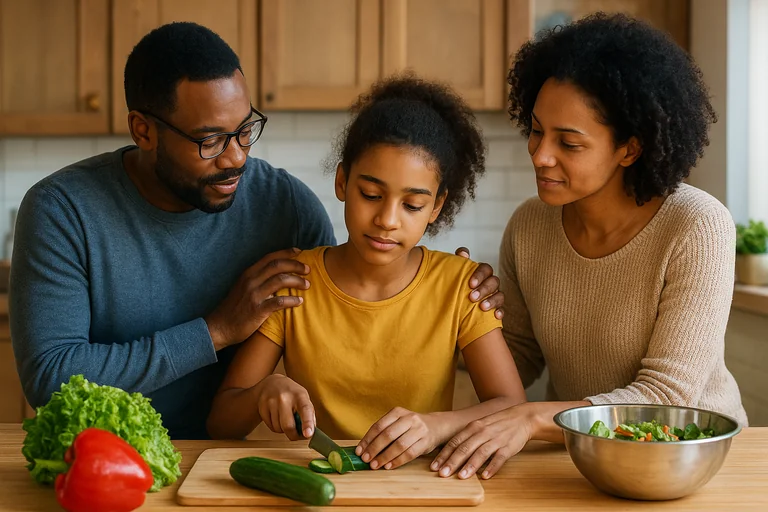A 2 minute assessment to get a personalized mental health or alcohol recovery plan.
Drinking less isn't about superhuman willpower—it's about setting up simple systems that make the easier choice also the obvious choice, so you fight fewer battles and win more often.
What You'll Discover:
- Five quick moves that make "drinking less" stick
- A realistic 30-day plan you can start today
- What to say when people ask, push, or tease
- How to handle cravings without white-knuckling
- When medication like naltrexone makes the difference
- What to do after a slip (without losing momentum)
If you've ever said "I'm cutting back this week" and then watched Friday night erase the plan, you're not alone. The first thing to know is this: drinking less isn't about having perfect motivation or iron willpower. It's about setting up a few simple systems that work even when you're tired, stressed, or surrounded by people who are drinking.
This guide gives you those systems, step by step. You'll learn how to change your environment so you fight fewer battles, how to handle cravings without white-knuckling through them, what to say in social situations, how medicines like naltrexone can lower the "pull" to drink, and how to bounce back after slips without losing your momentum.
You don't need to feel perfectly motivated to start. You just need one tiny action, repeated, and a plan that survives the 6-9 p.m. danger zone.
Why Cutting Back Is Worth It
People often expect to feel worse without alcohol. Most actually feel better within days: steadier energy, better sleep, calmer mornings, clearer skin, and real weekends back instead of recovery time.
Health-wise, alcohol affects nearly every organ system. Heavy use increases risks for high blood pressure, injury, multiple types of cancer, liver disease, depression, anxiety, and sleep disruption. Millions of U.S. adults meet criteria for alcohol use disorder each year, so if you're struggling with this, you're in very common company—and in very fixable territory.
If your goal is moderation rather than complete abstinence, the U.S. guideline definition is up to one drink per day for women and two for men. And that's per day on the days you drink—it doesn't mean save them all up for Saturday.
Five Quick Moves That Make "Less" Stick
These aren't New Year's resolutions. They're practical switches you can flip tonight that make success easier tomorrow.
1. Decide Before the Moment with If-Then Rules
Write two or three "If-Then" rules and paste them into your phone's notes app. When situation A happens, you'll automatically do action B. This removes the need to decide in the moment when willpower is lowest.
Examples:
- If I get home stressed, then I'll set a 10-minute timer and make tea or sparkling water first.
- If I'm out to dinner, then my first order is club soda with lime.
- If someone offers me a drink, then I'll say, "I'm doing a light month—grabbing a non-alcoholic one tonight."
2. Change the Path of Least Resistance
Environment beats willpower every time. Move alcohol out of sight or out of the house entirely. Pre-chill non-alcoholic options so they're ready to grab. Keep a "replacement ritual" within ten seconds of reach: kettle and mug for tea, bath salts and towel by the tub, or running shoes by the door.
3. Start with a Minimum Viable Cutback
Pick one simple rule for seven days. Don't try to overhaul everything at once.
- No alcohol Monday through Thursday, OR
- Maximum two drinks on social nights, OR
- Only drink after eating food, never at home, OR
- Drink a full glass of water between every alcoholic drink
4. Put a Rewarding Plan Right After the Urge Window
Schedule a 9:30 p.m. wind-down routine: warm shower, skincare, book or podcast, phone off. Your brain learns that not drinking still leads to something pleasant. You're replacing one dopamine source with another.
5. Consider Medication Support If Evenings Feel Like a Tug-of-War
FDA-approved medications like naltrexone reduce heavy-drinking days and make "stopping at one" or skipping drinks altogether much easier. The effects are modest but meaningful, and they're strongest when you also use simple behavior strategies like the ones in this guide.
A Simple 30-Day Plan
This plan is designed to be humane and sustainable, not restrictive to the point of failure.
Week 1: Clear the Runway
Start by removing barriers and creating easy alternatives. Remove or hide alcohol from your home, or at least move it out of sight. Stock two or three favorite non-alcoholic options—things you actually enjoy, not just substitutes you tolerate.
Pick one rule from the Minimum Viable Cutback list above. Write three If-Then rules and rehearse them once each morning. Before any social events, eat protein and fiber—this steadies blood sugar and shrinks cravings significantly.
If medication interests you, this is a good time to talk with a clinician about daily or targeted naltrexone, which you take about an hour before any planned drinking.
Week 2: Stabilize Your Evenings
Make your first drink non-alcoholic wherever you are—bar, restaurant, house party. This sets the tone and gives you time to assess whether you actually want alcohol or if you're just following habit.
Try the Craving Surf when urges hit: set a timer for ten minutes, make a hot drink, and practice box breathing (four counts in, four counts hold, four counts out, four counts hold). Cravings crest and fall within minutes if you give them space.
Commit to a 9:30 p.m. wind-down routine most nights. Build your accountability triangle: one friend, one support group, one tracking app. Keep it simple—over-engineering collapses compliance.
Week 3: Stress-Proof Your Plan
Map your three biggest triggers—boredom, stress, social pressure—and pair each with a micro-action. Stressed? Take a walk or shower. Bored? Text a friend or journal for five minutes. Socially pressured? Use one of the scripts we'll cover below.
Add social activities that don't involve alcohol: mocktail bars, bowling, game nights, early brunch hikes. If drinks do happen, keep your boundary: maximum two drinks, water between each, stop by 9 p.m.
Week 4: Lock in Your Gains and Decide What's Next
Re-choose your rule for month two. Will you keep the same approach, tighten it further, or switch to complete abstinence?
Pre-commit to two weekend morning activities that require a clear head: a fitness class, a long run, the farmer's market with a friend. This creates a built-in incentive to protect your Friday and Saturday nights.
Measure the boring wins: fewer heavy-drinking days, better sleep quality, calmer mornings, money saved. These matter more than perfect streaks.
For a deeper look at what improves when you pause alcohol, read our guide on the incredible benefits of quitting alcohol.
What to Say When People Ask, Push, or Tease
Social pressure is real, and having scripts ready makes all the difference.
The short version: "I'm doing a reset this month—grabbing a zero-proof one."
Redirect the conversation: "I'm the designated driver tonight. Tell me about your trip next week!"
Boundary with humor: "I'm on level-hard mode right now. Sparkling water for the win."
If someone really pushes: "I feel great with this plan. Thanks for backing me up."
Most people will follow your lead and drop the topic. The ones who don't are revealing something about themselves, not about you.
Cravings Explained (and Handled)
Cravings are temporary brain and body alarms, not commands you have to obey. They're shaped by cues like time of day, place, and people you're with, as well as blood sugar dips, stress levels, emotions, and habit loops.
Here's a five-step Rescue Drill you can run in under five minutes when a craving hits:
1. Name it: Say out loud or write down, "Urge at 7 out of 10 because I'm stressed and hungry."
2. Change your physical state: Eat a protein snack, drink a full glass of water, then step outside for two minutes of fresh air.
3. Run one If-Then rule: "If I still want it after my tea and the timer, I'll decide then."
4. Ping your accountability triangle: Send a three-word text to your buddy: "Urge at 7."
5. Shrink your goal: Instead of "I won't drink tonight," just commit to "No alcohol for the next 10 minutes." Reset the timer as many times as needed.
Most cravings peak and fade within 10-15 minutes if you ride them out instead of trying to fight them or immediately give in.
Track What Matters (and Feels Good)
Skip perfection metrics like consecutive dry days. Instead, monitor momentum with these measurements:
- Alcohol-free days per week
- Heavy-drinking days (four or more drinks for women, five or more for men)
- Sleep quality (subjective rating)
- Calm mornings (yes or no)
- Dollars saved
Watch your heavy-drinking days drop and your calm mornings increase. That's the real payoff, not some arbitrary streak number.
What If I Slip?
A slip isn't a character flaw or moral failure—it's a data point. Use the R.A.P.I.D. reset to get back on track immediately:
Review: What exact chain of events led here? (Example: Late meal, argument with partner, no non-alcoholic options at home.)
Adjust: Pick one small change you'll make next time. (Example: Eat before 7 p.m., keep three cans of seltzer in the fridge.)
Protect: The night still ends with water and bed. No "what the hell" spiral where you drink more just because you already slipped.
Inform: Send your accountability buddy one fact and one plan: "Had two drinks—next time I'll eat first."
Do: Take a 10-minute walk or shower right now. Tomorrow, return to your normal rule as if nothing happened.
The goal isn't a perfect streak. It's minimizing the distance between a slip and your next good choice.
Medicine Can Make "Less" Less Effort
Motivation isn't the only lever you can pull. Naltrexone, taken daily or in a targeted way before drinking, blunts alcohol's reward signal in your brain. This makes it easier to stop after one drink or pass on drinking altogether—especially during the risky 6-9 p.m. window when willpower is lowest.
Large systematic reviews show clinically meaningful reductions in heavy-drinking days when people take naltrexone. The effects work best when you pair medication with simple behavior tools like the ones in this guide.
Major clinical guidelines from the American Psychiatric Association and SAMHSA recommend naltrexone or acamprosate as first-line options for alcohol reduction and abstinence goals.
All that said, if you've been drinking heavily every day, don't stop suddenly without medical advice. Alcohol withdrawal can be serious, and telehealth providers can screen you quickly to determine the safest approach.
Curious whether moderation is the right goal for you versus complete abstinence? Read our guide on moderation management and controlled drinking.
Your "Less Drinking" Toolbox
Bookmark this section and come back to it whenever you need a quick reminder.
Environment Changes (Five Minutes Tonight)
Move bottles out of sight and stock non-alcoholic favorites. Put a replacement ritual front and center: tea kit, bath setup, or sneakers ready to go.
If-Then Rules (Paste Into Your Phone)
- If home + stressed → set 10-minute timer + make hot drink first
- If at restaurant → order non-alcoholic drink first round
- If offered a drink → "Light month—going non-alcoholic tonight"
Craving Surf (Ten Minutes)
Box breathing (4-4-4-4), hot drink, short walk, then reassess. Most cravings pass within this window.
Weekend Guardrails
Eat protein and fiber first. Drink water between any alcoholic drinks. Set a maximum of two drinks or go alcohol-free. Be the designated driver or book an early plan for the next morning.
Accountability Triangle
One friend, one support group, one tracking app. Keep it simple and actually use it instead of over-engineering a system you won't maintain.
Medication Option
Ask your doctor about daily versus targeted naltrexone to lower the reward signal and reduce heavy-drinking days.
Common Questions
Do I have to quit forever to cut back successfully?
No. Some people choose complete abstinence, and others start with rules like "Monday through Thursday off" or "maximum two drinks" and adjust from there. Any reduction in heavy-drinking days is a health win.
What do I do about social pressure?
Use a short script plus a redirect: "Doing a reset—trying the zero-proof menu tonight. How was your vacation?" Most friends will follow your conversational lead and move on.
How do I handle Friday 6-9 p.m.?
Eat first, start with a non-alcoholic drink, and have a plan that pays off at 9:30 p.m.—warm bath with a book, game night, or an early run the next morning. Consider taking targeted naltrexone on those high-risk nights.
How long until I feel benefits?
Often within a week: sleep quality and morning clarity come first, then mood and energy follow. Skin improvements and fitness gains show up over the following weeks.
What should I track?
Heavy-drinking days and calm mornings. If both of those are trending in the right direction, you're winning regardless of what the streak counter says.
Bringing It All Together
You don't need to overhaul your entire life. You need a few smart defaults: decide ahead with If-Then rules, make the easy choice visible and convenient, practice one 10-minute craving routine, and—if nights feel like a constant tug-of-war—use medication that lowers the biological "pull" toward drinking.
Two weeks from now, your Fridays can still be fun and your Saturdays can truly be yours again instead of spent recovering.
If you'd like a low-pressure way to see whether naltrexone plus virtual care fits your goals—whether that's moderation or complete abstinence—a short confidential assessment can map your options and help you design your first month.




